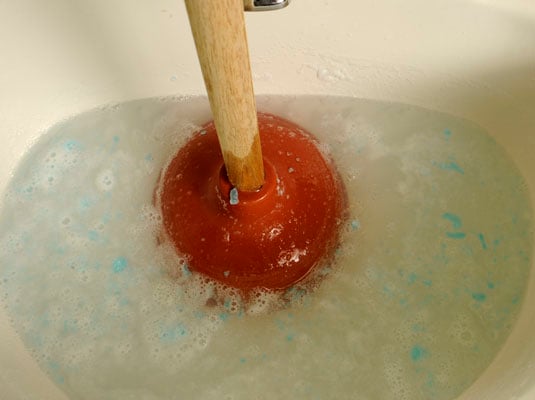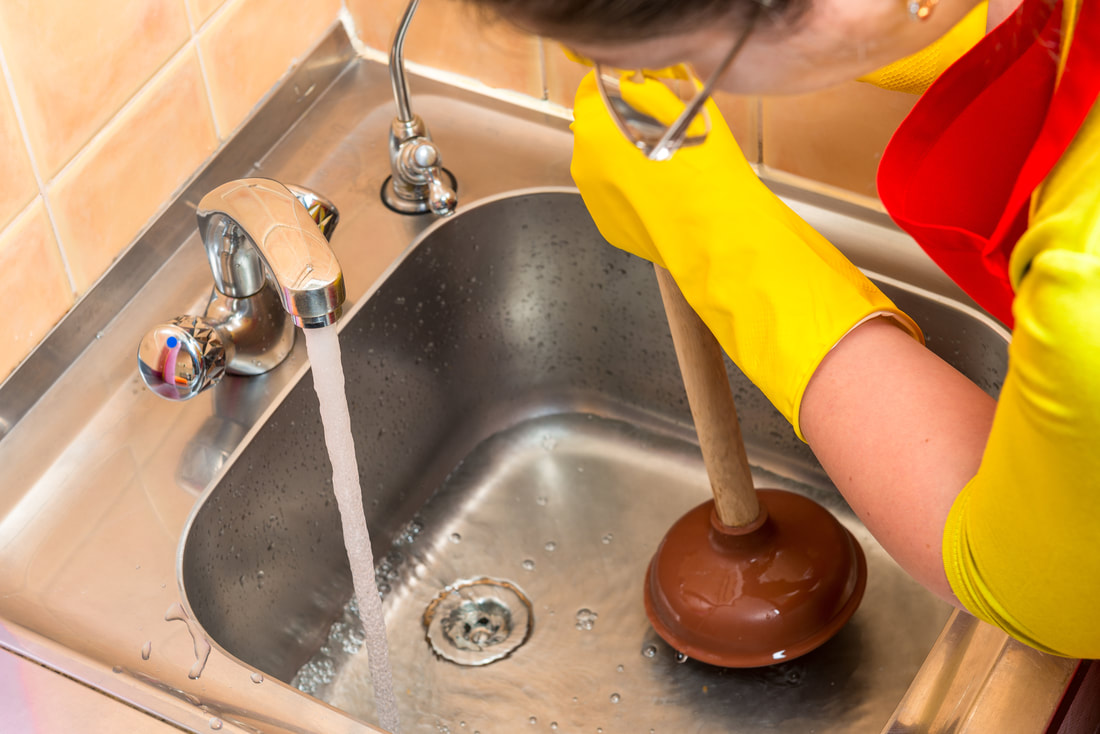Utilizing Plungers and Drain Cleaners: Efficient Approaches
Utilizing Plungers and Drain Cleaners: Efficient Approaches
Blog Article
On this page underneath you can get more outstanding help and advice when it comes to Here's How to Correctly Use a Toilet Plunger.

Intro
Correct maintenance of house drains is necessary for stopping obstructions and making sure smooth water circulation. One of the key tools in every property owner's toolkit is the plunger, alongside numerous drainpipe cleaners made to tackle persistent blockages efficiently. This short article explores exactly how to utilize bettors and drain cleansers successfully to keep your drains pipes moving easily.
Area 1: Comprehending Bettors
Sorts of Plungers
There are several sorts of plungers readily available, each created for different sorts of drains and obstructs. One of the most usual types include mug bettors, flange plungers, and accordion bettors.
Just How Plungers Job
Bettors deal with the principle of producing pressure and suction to remove blockages. When effectively used over a drainpipe, they develop a vacuum cleaner that can take out particles or separate obstructions.
Selecting the Right Plunger
Selecting the best plunger depends on the sort of drainpipe and the nature of the blockage. Cup plungers are perfect for sinks and tubs, while flange bettors are better suited for commodes due to their layout.
Typical Mistakes with Plungers
Avoiding these errors makes certain reliable plunging: inappropriate seal around the drainpipe, not enough pressure, and unclear surrounding particles.
Section 2: Utilizing Plungers Effectively
Preparation
Before plunging, make sure the plunger covers the drain entirely and forms a tight seal. Clear any kind of visible debris around the drainpipe opening.
Strategy
Start with mild diving activities to build suction. Rise pressure gradually, making use of a steady rhythm. Repeat as required up until the drainpipe gets rid of.
Troubleshooting Tips
If plunging does not function, attempt changing the seal, applying petroleum jelly for a much better seal, or using a different kind of bettor.
Area 3: Recognizing Drainpipe Cleaning Company
Types of Drain Cleansers
Drain pipes cleansers can be chemical or enzymatic. Chemical cleaners make use of solid chemicals to dissolve obstructions, while chemical cleaners use all-natural enzymes to break down raw material.
How Drain Cleaners Job
Chemical cleansers react with blockages to liquify them, while enzymatic cleansers break down organic materials like hair and oil without harming pipes.
Safety Factors to consider
Constantly put on handwear covers and eye security when utilizing chemical drainpipe cleaners. Ensure ample ventilation and adhere to maker instructions meticulously.
Eco-Friendly Alternatives
Think about using vinegar and cooking soft drink or enzyme-based cleansers for environment-friendly alternatives that are safer for pipes and the setting.
Section 4: Utilizing Drainpipe Cleaning Company Successfully
Application Methods
Pour chemical cleaners directly into the drainpipe opening. Permit them to benefit the advised time prior to purging with warm water. Chemical cleansers should sit overnight.
Safety measures
Prevent blending various kinds of cleaners, as this can produce toxic fumes. Never make use of chemical cleansers along with a plunger, as splashing can take place.
Managing Persistent Blockages
For relentless obstructions, think about utilizing a pipes serpent or calling a professional plumber to stop damage to pipes.
Conclusion
To conclude, recognizing how to utilize plungers and drain cleansers properly is vital for keeping healthy and balanced plumbing systems. By picking the right tools and techniques, home owners can deal with minor blockages and avoid significant pipes concerns down the line.
HOW TO EFFECTIVELY USE A PLUNGER
Chances are you’ve had to use a plunger a time or two. Having this bathroom tool within reach keeps things running smoothly when an unexpected clog strikes. Plungers can be easy to use, but there’s more to this bathroom staple than meets the eye.
How to Use a Plunger?
A plunger clears obstructions in a toilet, sink, or drain. Plungers are the simplest and most cost-effective tool for unclogging toilets. They’re available in different shapes and sizes, but all of them work on the same principle.
A cup-shaped rubber object is attached to the end of a flexible tube. The cup is inserted into the drain and then pushed up and down to create suction. This vacuum dislodges any clogs or obstructions in the drainpipe.
How You Really Should Use a Plunger?
Position the plunger over the drain and cover the opening completely.
Make sure there is the right amount of water in the bowl. There should be enough to cover the cup of the plunger. If there is too much water, remove any excess. If there is not enough, water should be added to the bowl.
Plunge rapidly in an up-and-down motion to create suction. Do this motion for about 20 seconds.
In order to ensure that you have created a good seal, continue to apply pressure while plunging.
Repeat as many times as necessary to get the clog released.
Picking the Right Plunger
There are different drains in your home that can clog, and different plungers are specifically designed for various drains. Where some plungers are better suited to unclog a toilet, others are made to unclog sinks. Picking the right plunger can help unclog the drain more efficiently.
Flange plungers are commonly used to unclog toilets
Cup plungers are better suited to unclog sinks
Accordion plungers are best for sed for tubs, or shower drains
Automatic plungers are more pricey but can send CO2 into the drain
Beehive plungers are able to plunge wide toilet drains
What to Do if a Plunger Fails
Try a chemical drain cleaner
Mix together a homemade solution of baking soda and vinegar
Pour a combination of boiling hot water and liquid dish detergent into the drain
Calling in the Pros at Elite Heating & Air
If all other methods fail and your clog still persists, it’s time to call in a professional plumber. The team at Elite Heating & Air can help restore balance to your drains and offers additional plumbing services for all your needs.
Drain cleaning
Water line repairs
Leak detection
Leak repairs
Kitchen and bathroom remodeling
Sewer Camera Inspection
https://www.elitecustomservices.com/blog/how-to-use-a-plunger/

Application Methods
Pour chemical cleaners directly into the drainpipe opening. Permit them to benefit the advised time prior to purging with warm water. Chemical cleansers should sit overnight.
Safety measures
Prevent blending various kinds of cleaners, as this can produce toxic fumes. Never make use of chemical cleansers along with a plunger, as splashing can take place.
Managing Persistent Blockages
For relentless obstructions, think about utilizing a pipes serpent or calling a professional plumber to stop damage to pipes.
Conclusion
To conclude, recognizing how to utilize plungers and drain cleansers properly is vital for keeping healthy and balanced plumbing systems. By picking the right tools and techniques, home owners can deal with minor blockages and avoid significant pipes concerns down the line.
HOW TO EFFECTIVELY USE A PLUNGER
Chances are you’ve had to use a plunger a time or two. Having this bathroom tool within reach keeps things running smoothly when an unexpected clog strikes. Plungers can be easy to use, but there’s more to this bathroom staple than meets the eye.
How to Use a Plunger?
A plunger clears obstructions in a toilet, sink, or drain. Plungers are the simplest and most cost-effective tool for unclogging toilets. They’re available in different shapes and sizes, but all of them work on the same principle.
A cup-shaped rubber object is attached to the end of a flexible tube. The cup is inserted into the drain and then pushed up and down to create suction. This vacuum dislodges any clogs or obstructions in the drainpipe.
How You Really Should Use a Plunger?
Position the plunger over the drain and cover the opening completely. Make sure there is the right amount of water in the bowl. There should be enough to cover the cup of the plunger. If there is too much water, remove any excess. If there is not enough, water should be added to the bowl. Plunge rapidly in an up-and-down motion to create suction. Do this motion for about 20 seconds. In order to ensure that you have created a good seal, continue to apply pressure while plunging. Repeat as many times as necessary to get the clog released. Picking the Right Plunger
There are different drains in your home that can clog, and different plungers are specifically designed for various drains. Where some plungers are better suited to unclog a toilet, others are made to unclog sinks. Picking the right plunger can help unclog the drain more efficiently.
Flange plungers are commonly used to unclog toilets Cup plungers are better suited to unclog sinks Accordion plungers are best for sed for tubs, or shower drains Automatic plungers are more pricey but can send CO2 into the drain Beehive plungers are able to plunge wide toilet drains What to Do if a Plunger Fails
Try a chemical drain cleaner Mix together a homemade solution of baking soda and vinegar Pour a combination of boiling hot water and liquid dish detergent into the drain Calling in the Pros at Elite Heating & Air
If all other methods fail and your clog still persists, it’s time to call in a professional plumber. The team at Elite Heating & Air can help restore balance to your drains and offers additional plumbing services for all your needs.
Drain cleaning Water line repairs Leak detection Leak repairs Kitchen and bathroom remodeling Sewer Camera Inspection https://www.elitecustomservices.com/blog/how-to-use-a-plunger/

Hopefully you enjoyed reading our topic on Tips on How to Effectively Use a Plunger. Thank you so much for taking the time to browse our blog. If you liked our blog posting if you please be sure to pass it around. Thanks so much for going through it.
Click Here To Read More Report this page